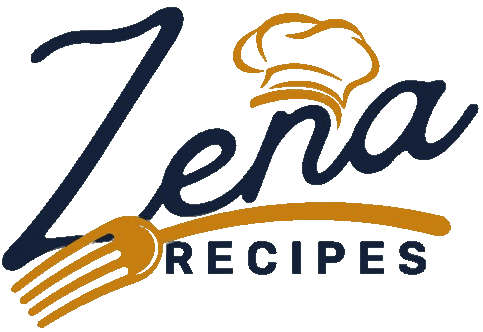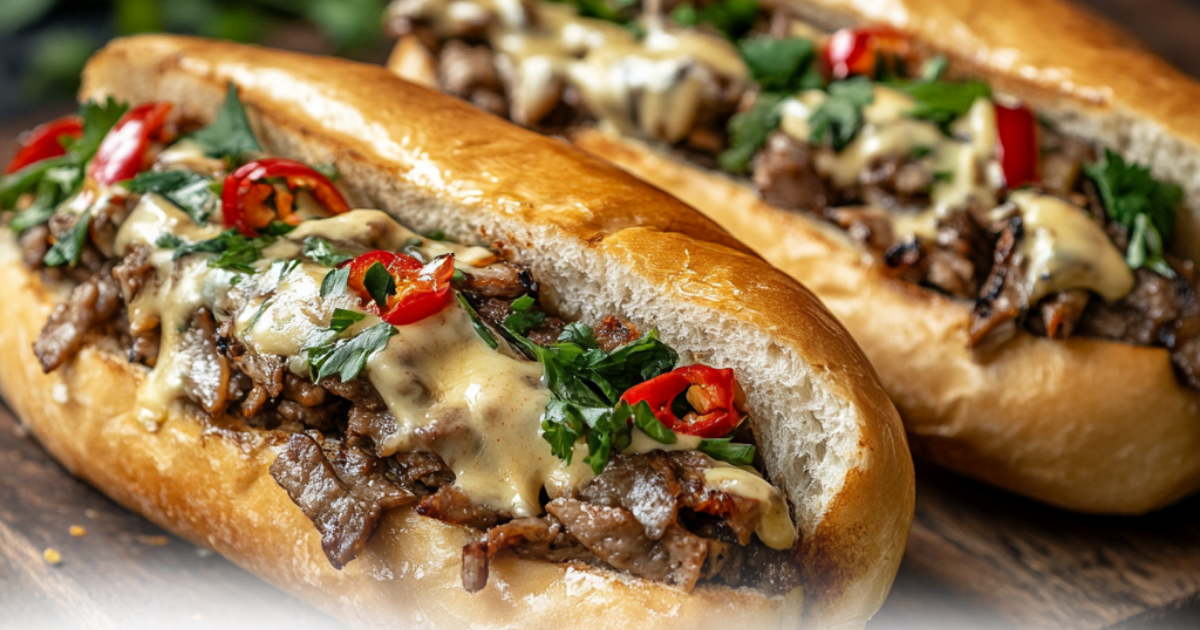A cheesesteak, often recognized as a cultural icon of Philadelphia, has captivated the taste buds of many. However, confusion sometimes arises regarding the difference between cheesesteak and Philly cheesesteak. This article will thoroughly examine the distinctions, focusing on their ingredients, preparation methods, and cultural implications. By dissecting these elements, we will gain a clearer understanding of each sandwich’s unique character.
Table of contents
What is a Philly Cheesesteak?
Originating from Philadelphia, the Philly cheesesteak is more than just a sandwich; it represents a piece of Philadelphia’s heritage. Typically, it consists of thinly sliced ribeye steak, melted cheese, and a long, crusty roll. The choice of cheese varies, with options including provolone, American cheese, or the infamous Cheez Whiz. While often served plain, many locals enjoy it with fried onions, labeling the version with onions as a “cheesesteak wit.”

What is a Regular Cheesesteak?
Contrary to its Philadelphia counterpart, a regular cheesesteak might not adhere to the strict traditional components that define the Philly original. It could include different cuts of beef, a variety of cheeses, and might be served on different types of bread. The term “regular cheesesteak” generally encompasses any steak and cheese sandwich that does not specifically follow the Philadelphia tradition, making it a more generic term.
Key Differences in Ingredients
- Meat: Philly cheesesteaks traditionally use thinly sliced ribeye, renowned for its flavor and tenderness. Regular cheesesteaks may use different cuts of beef or even other meats.
- Cheese: Authentic Philly cheesesteaks often feature Cheez Whiz, provolone, or American cheese. Alternatives might use mozzarella or cheddar.
- Additions: Traditionalists might argue that anything beyond cheese, onions, and perhaps peppers, strays from the authentic Philly recipe.
Differences in Bread
The bread is a fundamental component that affects texture and taste. A true Philly cheesesteak is served on a long, fresh, crusty hoagie roll capable of holding its contents without becoming soggy. Alternative cheesesteaks might come on a ciabatta, a baguette, or even a wrap, varying significantly from the original in both texture and flavor profile.

Preparation Techniques
Preparing a Philly cheesesteak requires specific techniques to ensure authenticity. The ribeye must be sliced very thinly, and the cheese should be thoroughly melted and evenly distributed. In contrast, other variations may not specify the thinness of the cut or the even distribution of the cheese, allowing for a broader interpretation in preparation style.

The Cultural Significance of the Philly Cheesesteak
The Philly cheesesteak is not merely a local delicacy; it embodies Philadelphia’s identity and pride. It originated in the 1930s and has since become synonymous with the city. This sandwich holds a place in the city’s cultural narrative and community spirit, often being an obligatory experience for visitors and a staple among locals.
How Cheesesteaks Have Evolved
Throughout the years, the cheesesteak has seen various adaptations across the U.S. From changes in meat cuts and cheese options to new toppings like mushrooms and bell peppers, the sandwich has adapted to regional tastes and preferences while maintaining its roots. In Philadelphia, however, the classic version remains a beloved standard, asserting the city’s culinary tradition in an ever-evolving food scene.
Personalization of Cheesesteaks
Cheesesteaks offer a wide range of personalization options. You can choose from different types of cheese such as Provolone, American, or Cheez Whiz, and decide whether to include onions, which can be fried or raw. Additional toppings like mushrooms, peppers, or tomatoes are also available. This flexibility allows the sandwich to be customized to regional tastes, setting it apart from the more traditional Philly version.

How to Spot an Authentic Philly Cheesesteak
An authentic Philly cheesesteak stands out due to its unique combination of specific ingredients, preparation techniques, and the cultural legacy it carries. Here are a few key elements that distinguish the real deal:
- Meat Quality and Preparation: Thinly sliced ribeye steak is non-negotiable for authenticity. The meat is cooked on a flat-top grill, ensuring it’s tender, juicy, and evenly seared. The steak should be chopped finely on the grill to blend well with the cheese.
- Cheese Options: Traditional options like Cheez Whiz, provolone, or American cheese are essential. Cheez Whiz, in particular, is often viewed as the hallmark of a classic Philly cheesesteak.
- Roll Perfection: The bread plays a crucial role. A long, crusty hoagie roll that’s soft on the inside but sturdy enough to hold the filling is indispensable. Local bakeries like Amoroso’s are legendary for providing the ideal cheesesteak rolls.
- No Overcomplications: Authenticity means simplicity. Avoid adding too many toppings or overly gourmet ingredients, as the focus should remain on the meat, cheese, and bread.
Unique Cheesesteak Tradition
Beyond ingredients and techniques, there are traditions that make the Philly cheesesteak experience unique:
- Ordering Lingo: At classic establishments like Pat’s or Geno’s, ordering in local jargon is part of the charm. “Wit” means with onions, and “witout” means without. Being prepared to order quickly and clearly is essential.
- Rivalries and Loyalty: Philadelphia is home to famous cheesesteak rivalries, most notably between Pat’s King of Steaks and Geno’s Steaks. These two iconic establishments sit across from each other, and locals often have a strong allegiance to one or the other,Learn more about How Many Calories Are in Philly Cheesesteak Pasta?
The Cheesesteak’s Role in Popular Culture
The Philly cheesesteak’s influence extends beyond food—it’s a symbol of Philadelphia’s identity and resilience. It has been featured in films, TV shows, and even political campaigns, representing the working-class roots of the city. The sandwich has become a rite of passage for celebrities, athletes, and tourists visiting Philadelphia, cementing its role as a pop-culture icon.
How to Make a Cheesesteak at Home
Creating a cheesesteak at home can be an enjoyable culinary experiment. Here’s a simplified guide:
- Ingredients:
- Thinly sliced ribeye steak or a similar tender cut.
- Cheese: Cheez Whiz, provolone, or American.
- A sturdy hoagie roll.
- Optional: Sautéed onions, mushrooms, or peppers.
- Preparation:
- Heat a griddle or large skillet over medium-high heat.
- Cook the thinly sliced steak, chopping it as it cooks to ensure even doneness.
- Add the cheese directly to the meat on the griddle, allowing it to melt and blend.
- Toast the hoagie roll lightly if desired.
- Assemble by layering the meat and cheese mixture into the roll. Add onions or other toppings if preferred.
- Serve Immediately:
- A cheesesteak is best enjoyed fresh, as the combination of hot, melted cheese and warm steak is the essence of its appeal.
The Future of Cheesesteaks: Trends and Innovations
As culinary trends evolve, the cheesesteak continues to inspire creative reinterpretations. Vegan and vegetarian versions, featuring plant-based meat substitutes and dairy-free cheese, have gained popularity, catering to diverse dietary preferences. Additionally, global flavors like kimchi, spicy aioli, or fusion breads are being incorporated to appeal to adventurous eaters. Despite these innovations, the original Philly cheesesteak remains a cherished culinary tradition.
FAQs About Cheesesteaks
1. What is the main difference between a Philly cheesesteak and a regular cheesesteak?
A Philly cheesesteak follows traditional methods and uses specific ingredients, such as thinly sliced ribeye steak, Cheez Whiz, provolone, or American cheese, served on a crusty hoagie roll. A regular cheesesteak may deviate from these conventions, using different meats, cheeses, or bread.
2. What kind of cheese is typically used in a Philly cheesesteak?
The most common options are Cheez Whiz, provolone, and American cheese. Cheez Whiz is often considered the most iconic choice for an authentic Philly experience.
3. Can I use a different type of meat for a cheesesteak?
While the traditional Philly cheesesteak uses ribeye steak, variations may use other cuts of beef, chicken, or even plant-based substitutes for dietary preferences.
Are onions mandatory in a cheesesteak?
No, onions are optional. If you want them, you would order your cheesesteak “wit” onions, and if not, you would order it “witout.”
5. Is a Philly cheesesteak spicy?
Typically, a Philly cheesesteak is not spicy unless you add toppings like hot peppers or spicy sauces. The base recipe is mild and focuses on the flavors of the meat, cheese, and bread.
6. What bread is best for making a cheesesteak?
A long, crusty hoagie roll is essential for an authentic Philly cheesesteak. The roll should be soft on the inside and sturdy enough to hold the sandwich’s contents without falling apart.
What are some common toppings for cheesesteaks?
Popular toppings include sautéed onions, mushrooms, bell peppers, and hot or sweet peppers. Some variations might also include condiments like ketchup, mayonnaise, or mustard.
8. Can cheesesteaks be made vegetarian or vegan?
Yes, vegetarian or vegan versions can be made using plant-based meat substitutes and dairy-free cheese, along with traditional toppings like onions, peppers, and mushrooms
Cheesesteak Controversies and Debates
The authenticity and adaptation of the cheesesteak often spark debate. Some purists believe that any deviation from the original recipe detracts from its authenticity, while others see the evolution of the dish as a positive adaptation to local tastes and preferences.
Eating a Cheesesteak “The Right Way”
There are unwritten rules about consuming a Philly cheesesteak that can enhance the experience. These include:
- Ordering with confidence and clarity—know whether you want “with” or “without” onions.
- Eating the sandwich quickly after it’s made to enjoy the melding of flavors when they’re most vibrant. By following these guidelines, one can enjoy a cheesesteak in its most traditional form, whether it’s a Philly or a variant inspired by local tastes.

